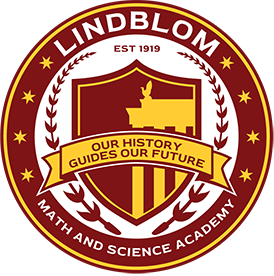Why Proficiency Based Learnng (PBL)?
History and Development:
After years of individual teachers working to improve their learning and assessment systems, Lindblom decided to transition to Proficiency-Based Learning (PBL) as an entire school. This decision was guided by the work of the ALSC's Assessment and Evaluation Committee made up of parents, teachers, and students. This committee researched the issue and surveyed various stakeholders in the process of recommending a system that would be more transparent to students and parents and incorporate the latest research on student motivation and growth mindset.
Why did we switch to Proficiency Based Learning?
As a school, we are constantly striving to improve and better prepare our students for future success. Five years ago, we realized we were not achieving this goal. Our students had high ACT scores like those at other Selective Enrollment high schools, but their GPAs were significantly lower. Research has shown that one’s high school GPA is a better indicator of collegiate success than ACT or SAT scores. Many colleges and universities now place a greater emphasis on an applicant’s GPA, and a low GPA can disqualify a student from receiving scholarships.
When we compared our 2011 Freshmen On-Track rate to other CPS schools, we found that our male students were 15% below average and our female students were 5% below average. Freshmen On-Track rates have been identified by the University of Chicago as the best indicator of future high school success and an indicator of a student’s likelihood to graduate from high school. This information convinced us that we needed to make changes in how we educate and assess our students to ensure that we were serving the entire population to the best of our ability.
This need for a change in approach was recently reinforced by research released by The University of Chicago last month that also shows that Lindblom and other selective enrollment schools were not fully serving all students. The research looks at selective schools for years 2010-2011, 2011-2012, 2012-2013 & 2013-2014. You can view the research as a download below.
The next few years saw individual teachers at Lindblom working to improve their learning and assessment practices in an effort to increase both Freshman On-Track rates and student GPAs while not sacrificing academic rigor. Some common best practices began to emerge around Proficiency-Based Learning (PBL) and Lindblom decided to implement this systematic approach throughout the school. This decision was guided by the work of the ALSC's Assessment and Evaluation Committee, made up of parents, teachers, and students. The committee thoroughly researched the issue, conducted stakeholder surveys, and ultimately recommended PBL as a system that would be more transparent to students and parents and that would incorporate the latest research on student motivation and growth mindset.
Though we continue to improve and refine PBL, the data shows that we are now doing a better job of serving our entire student population. Our Freshmen On-Track has significantly improved and is currently at 99%, and our unweighted GPAs have increased from 2.4 in 2012-2013 to 3.0 today. Since implementation of PBL, we have also seen more of our students being accepted to Selective and Highly Selective Colleges and an increase in the number and amount of scholarships being awarded to our students.
| Lindblom Data Before & After PBL Implementation | ||
| Data Point | Before PBL | Today with PBL |
| Freshmen On-Track | 83% | 99.3% |
| Unweighted GPAs | 2.4 | 3.0 |
| Highly Selective Colleges Acceptance | 17% | 31% |
| Scholarships | $15,000,000 | $55,500,000 |
Files:

